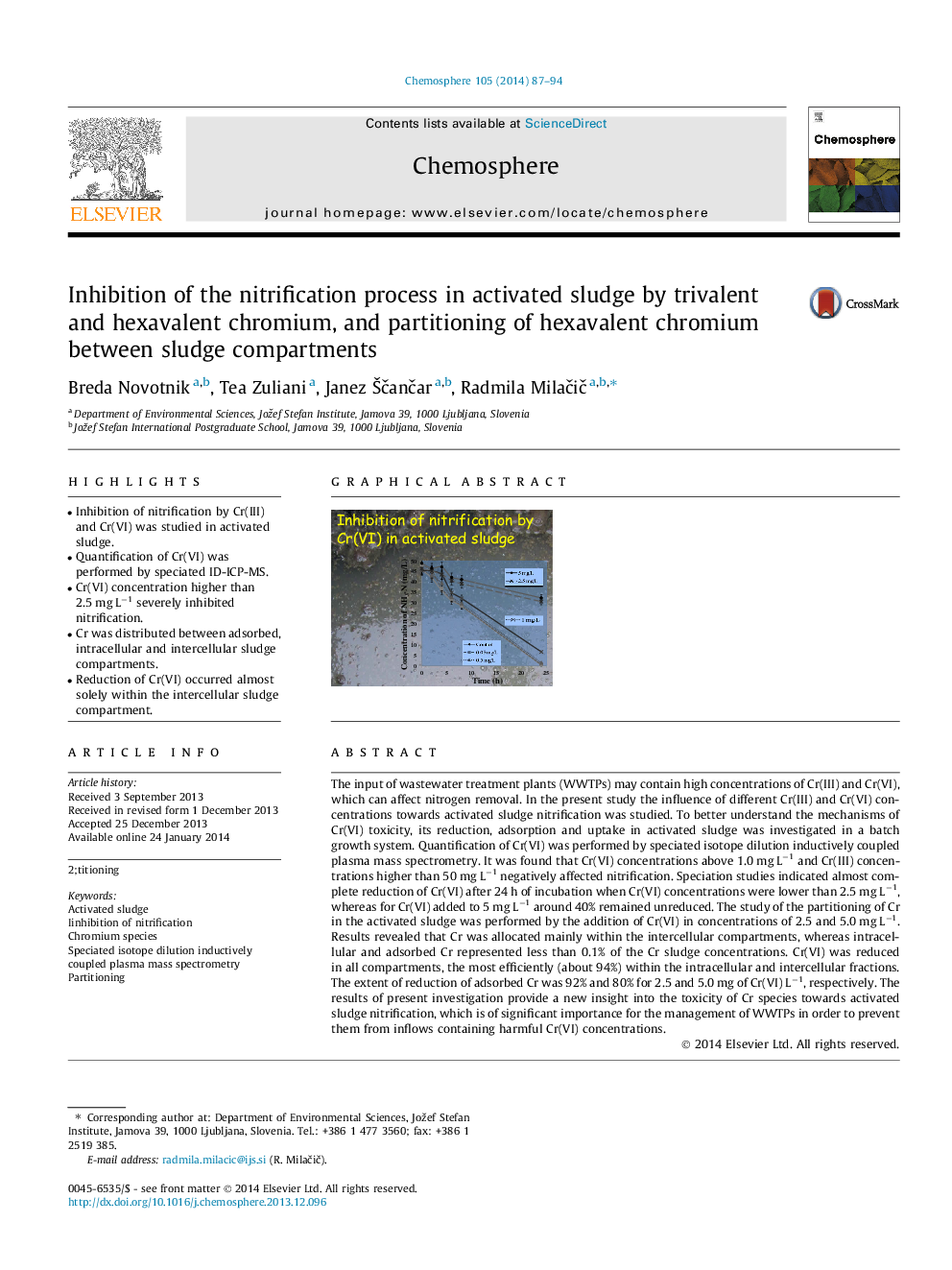| Article ID | Journal | Published Year | Pages | File Type |
|---|---|---|---|---|
| 4408883 | Chemosphere | 2014 | 8 Pages |
•Inhibition of nitrification by Cr(III) and Cr(VI) was studied in activated sludge.•Quantification of Cr(VI) was performed by speciated ID-ICP-MS.•Cr(VI) concentration higher than 2.5 mg L−1 severely inhibited nitrification.•Cr was distributed between adsorbed, intracellular and intercellular sludge compartments.•Reduction of Cr(VI) occurred almost solely within the intercellular sludge compartment.
The input of wastewater treatment plants (WWTPs) may contain high concentrations of Cr(III) and Cr(VI), which can affect nitrogen removal. In the present study the influence of different Cr(III) and Cr(VI) concentrations towards activated sludge nitrification was studied. To better understand the mechanisms of Cr(VI) toxicity, its reduction, adsorption and uptake in activated sludge was investigated in a batch growth system. Quantification of Cr(VI) was performed by speciated isotope dilution inductively coupled plasma mass spectrometry. It was found that Cr(VI) concentrations above 1.0 mg L−1 and Cr(III) concentrations higher than 50 mg L−1 negatively affected nitrification. Speciation studies indicated almost complete reduction of Cr(VI) after 24 h of incubation when Cr(VI) concentrations were lower than 2.5 mg L−1, whereas for Cr(VI) added to 5 mg L−1 around 40% remained unreduced. The study of the partitioning of Cr in the activated sludge was performed by the addition of Cr(VI) in concentrations of 2.5 and 5.0 mg L−1. Results revealed that Cr was allocated mainly within the intercellular compartments, whereas intracellular and adsorbed Cr represented less than 0.1% of the Cr sludge concentrations. Cr(VI) was reduced in all compartments, the most efficiently (about 94%) within the intracellular and intercellular fractions. The extent of reduction of adsorbed Cr was 92% and 80% for 2.5 and 5.0 mg of Cr(VI) L−1, respectively. The results of present investigation provide a new insight into the toxicity of Cr species towards activated sludge nitrification, which is of significant importance for the management of WWTPs in order to prevent them from inflows containing harmful Cr(VI) concentrations.
Graphical abstractFigure optionsDownload full-size imageDownload as PowerPoint slide
